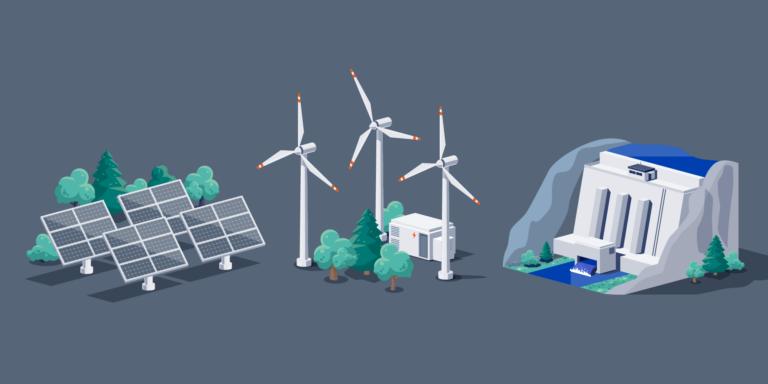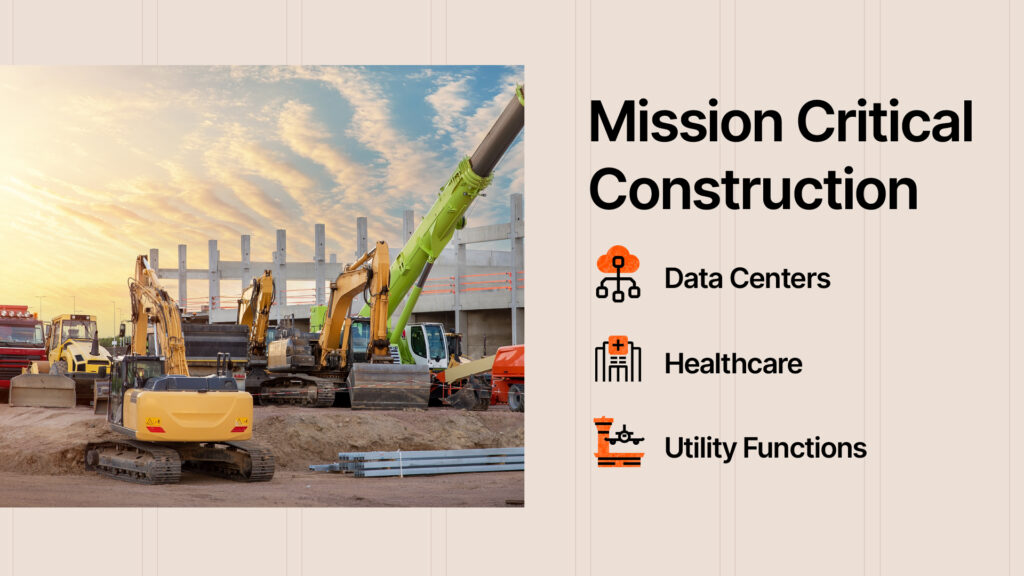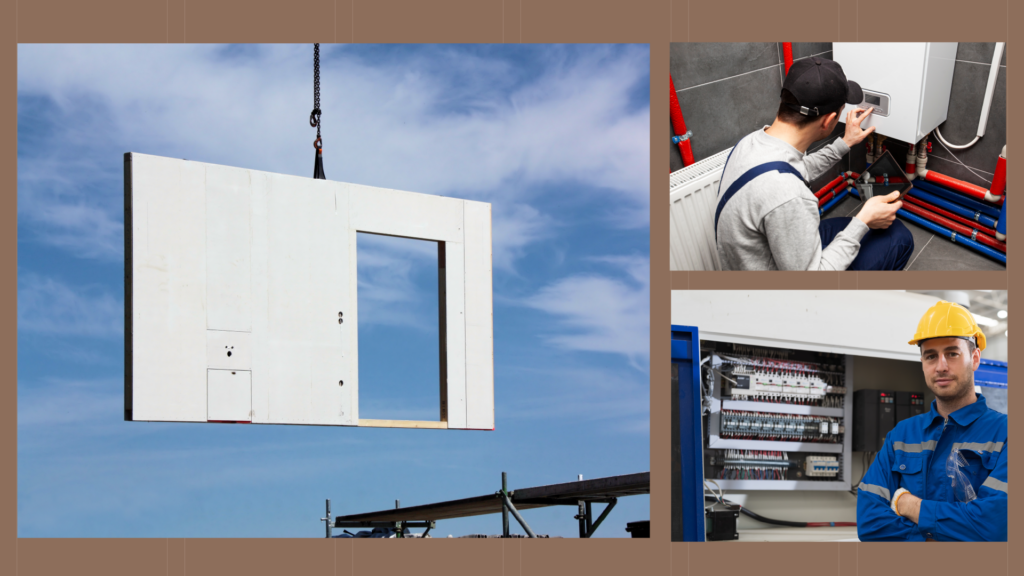— 5 min read
Overcoming Geographic Challenges on Renewable Energy Projects
Last Updated Feb 3, 2025
Last Updated Feb 3, 2025

The renewable energy construction sector is moving quickly. Demand is growing, projects are fast-paced and the industry is ever-evolving. Keeping up — or better yet, staying ahead — requires effective data management for safety, quality and communication.
However, the location of renewable projects is dictated by the availability of space and of natural resources, like sunlight and wind. This often results in projects in remote locations lacking infrastructure, making it difficult to consistently and reliably capture, transmit and analyze data.
The ability to overcome connectivity challenges goes hand in hand with being able to deliver renewable energy projects safely, on time and on budget. This article explores these challenges and strategies for overcoming them, so project managers can focus on harnessing the power of data in even the most isolated locations.
Table of contents
The Basics of Data on Renewable Projects
On any type of construction project, data and analytics insights offer valuable metrics on performance, safety, workflows, timelines and budgets. Because renewable energy projects are commonly large-scale, high-budget, technologically advanced and connected to energy infrastructure, they are often even more reliant on consistent and reliable data, especially for inspections for quality, safety and compliance with standard operating procedures (SOPs), design specifications and local building codes and regulations.
Wind farms, solar farms and hydroelectric projects require access to large amounts of space and natural resources, both of which are often best found in locations far from more populated areas. Remote sites often lack the infrastructure to maintain consistent connectivity for data transmission and real-time communication. This leaves stakeholders’ connectivity prone to interference and reliability issues or, at worst, being completely inaccessible.
Each phase of data management — capture, transmission and analysis — are made more challenging by the remote locations of renewable projects. Delays in data management can significantly increase the chances of costly delays, miscommunications, rework or decisions made without the most up-to-date information.
4 Tips for Overcoming Connectivity Problems
The nature of connectivity problems will always vary based on project type, location, available technology and requirements for data transmission and communication. Project managers (PMs) and preconstruction teams should always take time to understand their project’s unique challenges and constraints, so they can find solutions that are effective and as comprehensive as possible.
There are a few mindsets that usually help overcome connectivity issues in remote locations.
1. Prioritize data.
Not all data is equal. The results of a safety inspection could impact the well-being of workers and the public, while a drone’s site survey will help with decision-making but is less urgent. Prioritize data based on real-time impact so that stakeholders can upload, download and access the most important information when connectivity is limited.
2. Invest in cloud-based solutions.
It might sound counterintuitive to rely on software, apps and technology that use the internet — the very thing that’s hard to come by in remote locations. However, many cloud-based solutions are the best possible tool for handling connectivity that comes and goes.
Most cloud-based technology, including Procore, allows users to work offline when using a mobile device. Even when connectivity is lost, they can continue to capture and report data, which is saved and will be uploaded once connectivity is reestablished. Beyond capturing data, working offline lets people access critical project information without connecting to the internet.
3. Create clear SOPs.
PMs should have an understanding of the network and connectivity issues specific to a project. Standard operating procedures (SOPs) are a way to share that information with other stakeholders so they can make the most of the times they have connectivity. The simplest, and often most effective, version of this is often downloading necessary information prior to losing web service, capturing the day’s relevant work within the mobile app and verifying that the new data automatically uploads after leaving the site and reentering cell or wi-fi service.
While it seems straightforward, people are accustomed to having constant connectivity, so they often don’t plan ahead. Creating SOPs and clearly conveying them helps avoid situations where workers, subcontractors and inspectors aren’t able to access important documents, lose valuable data or don’t know what to do in an emergency.
SOPs also create systems and expectations for people who aren’t on site and are awaiting communication with the people who are. Collaborators and stakeholders can effectively plan their work if they know when they’ll receive data and data analysis.
4. Control connectivity in-house.
On projects that require real-time communication and the transmission of large amounts of data, many teams invest in satellite internet services. These services provide internet in remote locations and can often be moved from site to site. However, these tools can have limited reach, so they are often used to create hubs of connectivity, such as in a site trailer.
Advanced connectivity and network solutions, such as mesh networks or edge computing, have the potential to create reliable networks on remote sites, but they are often too expensive and cumbersome to justify on most projects.
Stay updated on what’s happening in construction.
Subscribe to Blueprint, Procore’s free construction newsletter, to get content from industry experts delivered straight to your inbox.

Bringing in Third-Party Stakeholders
It becomes even more important to have effective connectivity plans and clear SOPs when working with third-party inspectors, subcontractors and an authority having jurisdiction (AHJ). These stakeholders are essential for completing a project, but are often not fully integrated into a team’s workflows.
Communicating SOPs, data priorities, potential challenges and emergency plans with third parties before their work begins ensures they’re aligned with the project’s goals, know what to do in the case of an emergency and don’t end up in situations where they’re unable to communicate and lose important data while out of service.
Was this article helpful?
Thank you for your submission.
100%
0%
You voted that this article was . Was this a mistake? If so, change your vote here.
Scroll less, learn more about construction.
Subscribe to The Blueprint, Procore’s construction newsletter, to get content from industry experts delivered straight to your inbox.
By clicking this button, you agree to our Privacy Notice and Terms of Service.
Categories:
Tags:
Written by
D. Jesse Mase
D. Jesse Mase has a wealth of experience spanning architecture, construction, and real estate investment. His passion for the built environment led him to self-employment as a design builder, and later, managing large-scale commercial construction projects at Trehel Corporation. Currently, Jesse leverages his industry insights in his role as Principal Strategic Product Consultant at Procore, streamlining processes and solutions for construction project owners.
View profileJames Hamilton
70 articles
James Hamilton is a writer based in Brooklyn, New York with experience in television, documentaries, journalism, comedy, and podcasts. His work has been featured on VICE TV and on The Moth. James was a writer and narrator for the show, VICE News Tonight, where he won an Emmy Award and was nominated for a Peabody Award.
View profileExplore more helpful resources

Mission Critical Construction: Strategies for Success
Mission critical construction involves building structures whose functions cannot afford to fail, as any disruptions can lead to significant consequences for society. Keeping data centers, hospitals, power plants and other...

Modular Construction and MEP: A Collaborative Pairing
In an age of supply chain disruptions, workforce shortages, and rising material costs, off-site construction — including modular construction methods and prefabricated materials — is surfacing as a multipurpose solution....

Connected Construction: Transforming the Industry Through Integration
Construction projects are becoming increasingly complex, so companies need to innovate to accurately and profitably complete these modern structures. Connected construction — using technology and data to improve communication, processes...

Off-Site Construction: Prefab vs. Modular
As the construction world becomes ever more competitive, deadlines get tighter and the margin for error gets slimmer, project owners around the world are always looking for an edge. Thanks...